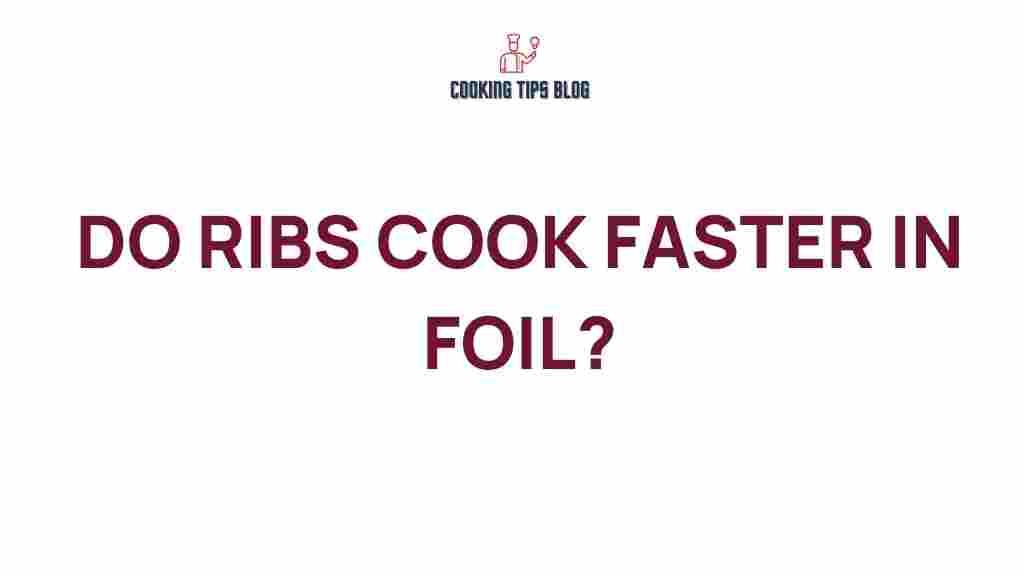Unveiling the Secrets: Do Ribs Cook Faster in Foil?
When it comes to barbecue, few things can rival the succulent taste of perfectly cooked ribs. However, the cooking process can often leave novice and even seasoned grillers puzzled, particularly regarding the method they should use. One common question that arises is: do ribs cook faster in foil? In this article, we’ll delve into the science of cooking ribs, explore the pros and cons of using foil, and provide you with a comprehensive guide to achieving mouth-watering results.
Understanding Ribs: Types and Cooking Techniques
Before we can answer the question about cooking ribs in foil, it’s essential to understand the different types of ribs and the methods used to cook them. Ribs generally fall into three main categories:
- Baby Back Ribs: These are shorter, leaner, and tender ribs that come from the upper part of the pig’s rib cage.
- Spareribs: Larger and meatier than baby backs, spareribs come from the lower part of the pig and have more fat, resulting in a richer flavor.
- St. Louis Style Ribs: These are spareribs that have been trimmed into a rectangular shape, making them easier to cook and serve.
Each type of rib has its own unique characteristics, and the cooking method you choose can greatly affect the final outcome. Common cooking techniques include grilling, smoking, and baking. However, wrapping ribs in foil is a technique that has gained popularity, particularly among those seeking to speed up the cooking process.
The Science Behind Cooking Ribs in Foil
The idea of cooking ribs in foil revolves around a simple scientific principle: moisture retention. When ribs are wrapped in foil, they create a sealed environment that traps steam and moisture, which can result in:
- Faster Cooking: The steam generated inside the foil helps cook the ribs more quickly than traditional methods.
- Tenderization: The moist environment can help break down tough connective tissues, resulting in tender and juicy ribs.
- Flavor Infusion: If you add a marinade or seasoning to the foil, the flavors can penetrate the meat more effectively.
However, while the foil method can yield quick and tender results, it also has some drawbacks. Ribs cooked in foil may lack the classic smoky flavor and crispy bark that many barbecue enthusiasts cherish.
Step-by-Step Process: Cooking Ribs in Foil
Now that we’ve established the benefits of cooking ribs in foil, let’s walk through the step-by-step process to ensure your ribs turn out perfectly every time.
Ingredients Needed
- 2-3 pounds of ribs (baby back, spareribs, or St. Louis style)
- Your choice of dry rub or marinade
- Aluminum foil
- Optional: BBQ sauce for finishing
Preparation Steps
- Preheat Your Oven or Grill: If you’re baking, preheat your oven to 300°F (150°C). If you’re using a grill, prepare it for indirect cooking.
- Remove the Membrane: For more tender ribs, remove the tough membrane on the back of the ribs. This allows flavors to penetrate better.
- Season the Ribs: Generously apply your chosen dry rub or marinade to both sides of the ribs. Let them sit for at least 30 minutes to absorb the flavors.
- Wrap in Foil: Place the seasoned ribs on a large piece of aluminum foil. Wrap them tightly to create a sealed packet, ensuring no steam escapes.
Cooking the Ribs
- Bake or Grill: Place the foil-wrapped ribs in the preheated oven or on the grill. Cook for 2.5 to 3 hours, depending on the size and type of ribs.
- Check for Tenderness: After the cooking time, carefully unwrap the foil (watch out for steam) and check if the ribs are tender. They should bend easily when lifted.
- Finish with BBQ Sauce (Optional): If you prefer a glaze, brush barbecue sauce on the ribs and return them to the oven or grill uncovered for an additional 15-30 minutes.
Serving Suggestions
Once your ribs are cooked to perfection, let them rest for a few minutes before slicing. Serve them with your favorite sides such as coleslaw, cornbread, or baked beans for a complete barbecue experience.
Troubleshooting Tips for Cooking Ribs in Foil
Even with a solid recipe, you might encounter some issues when cooking ribs in foil. Here are some common problems and their solutions:
- Ribs Are Tough: If your ribs are tough after cooking, they may need additional cooking time. Wrap them back in foil and return them to the heat for another 30 minutes.
- Too Much Moisture: If your ribs are overly soggy, consider reducing the cooking time or slightly loosening the foil to allow steam to escape.
- Lack of Smoky Flavor: To enhance the smoky flavor, consider adding wood chips to the grill or using a smoker box if you’re cooking on a grill.
Conclusion: To Foil or Not to Foil?
So, do ribs cook faster in foil? The answer is a resounding yes, but with some caveats. Cooking ribs in foil can lead to quicker cooking times and tender results, making it an appealing option for busy cooks. However, it may sacrifice some of the traditional flavors that come from slow-cooked barbecue. Ultimately, the choice depends on your preferences and the time you have available.
Whether you choose to wrap your ribs in foil or stick with the classic method, the key to delicious ribs lies in patience and quality ingredients. Happy grilling!
For more tips on grilling and barbecue secrets, check out this comprehensive guide.
For further reading and techniques, you can also visit this resource for expert barbecue advice.
This article is in the category Tools and created by Cookingtipsblog Team
